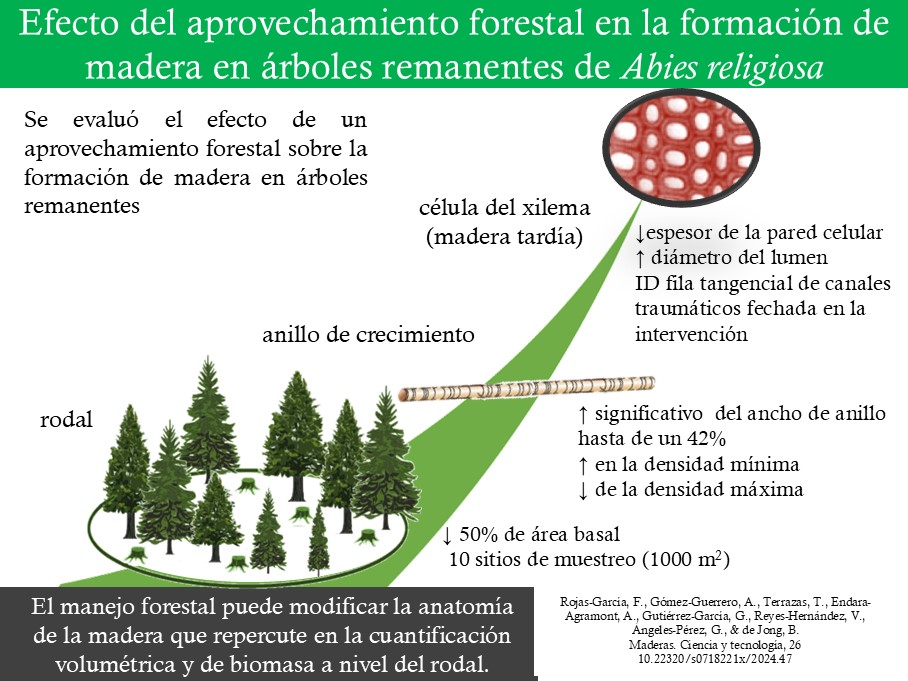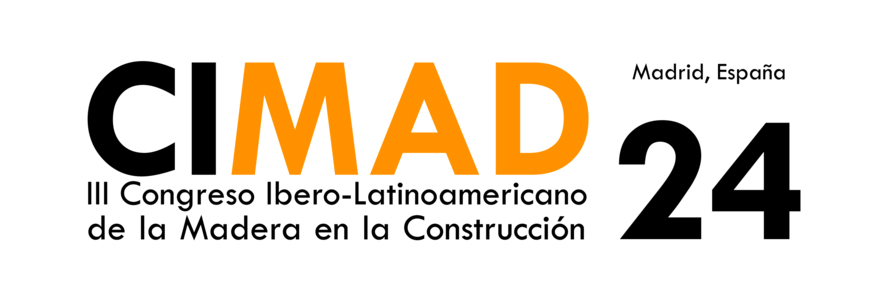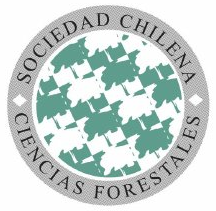Efecto del aprovechamiento forestal en la formación de madera en árboles remanentes de Abies religiosa
DOI:
https://doi.org/10.22320/s0718221x/2024.47Keywords:
Abies religiosa, aprovechamiento forestal, dendroanatomía, dendroecología, espesor de la pared celular, traqueida, madera tardía, microdensidad de la maderaAbstract
El manejo forestal puede modificar la estructura y la calidad de la madera. En este estudio se evaluó el efecto de un aprovechamiento forestal sobre la formación de madera en árboles remanentes. En un bosque de Abies religiosa (oyamel) intervenido con un aclareo del 50 % de área basal durante 2014, se inventariaron 10 sitios de muestreo (1000 m2). Se analizaron mediante técnicas dendrocronológicas 80 núcleos de crecimiento provenientes de 40 árboles remanentes. Se evaluó la microdensidad y las características celulares de la madera tardía. Los anillos de crecimiento de Abies religiosa (oyamel) presentaron una buena delimitación entre madera temprana y madera tardía en la cronología de 90 años desarrollada. El aprovechamiento forestal incremento en 42,4 % el ancho de anillo; la microdensidad varió de 189 kg·m-3 a 417 kg·m-3 ( = 335 kg·m-3); las traqueidas presentaron una disminución de 8,02 % en el espesor de la pared celular y el diámetro del lumen aumento un 29,8 %. Se identificó una fila de canales traumáticos fechada en 2014, posiblemente relacionados con el estrés de la corta. Las modificaciones en la anatomía de la madera causaron una variación en la microdensidad de la madera, que repercute en la cuantificación volumétrica y de biomasa a nivel del rodal.

Downloads
References
Abrams, M.; Hock, W. 2006. Annual growth rings and the impact of Benlate 50 DF fungicide on citrus trees in seasonally dry tropical plantations of northern Costa Rica. Forest Ecology and Management 227(1-2): 96-101. https://doi.org/10.1016/j.foreco.2006.02.019
Auty, D.; Achim, A.; Macdonald, E.; Cameron, A.; Gardiner, B. 2014. Models for predicting wood density variation in Scots pine. Forestry 87(3): 449-458. https://doi.org/10.1093/forestry/cpu005
Beeckman, H. 2016. Wood Anatomy and Trait-Based Ecology. IAWA Journal 37(2): 127-151. https://doi.org/10.1163/22941932-20160127
Bernal, S.; Terrazas, T. 2000. Influencia climática sobre la variación radial de caracteres anatómicos de madera en Abies religiosa. Madera y Bosques 6(1): 73-86. https://doi.org/10.21829/myb.2000.611343
Björklund, J.; Seftigen, K.; Fonti, P.; Nievergelt, D.; von Arx, G. 2020. Dendroclimatic po- tential of dendroanatomy in temperature-sensitive Pinus sylvestris. Dendrochronologia 60:e125673. https://doi.org/10.1016/j.dendro.2020.125673
Calderón de Rzedowski, G.; Rzedowski, J. 2005. Flora fanerogámica del Valle de México. Pátzcuaro, México: Instituto de Ecología, A.C. y Comisión Nacional para el Conocimiento y Uso de la Biodiversidad. ISBN 9786077607366. 1406p.
Camarero, J.; Gutiérrez, E. 2017. Wood density of silver fir reflects drought and cold stress across climatic and biogeographic gradients. Dendrochronologia 45: 101-112. https://doi.org/10.1016/j.dendro.2017.07.005
Campelo, F.; Nabais, C.; Freitas, H.; Gutiérrez, E. 2007. Climatic significance of tree-ring width and intra-annual density fluctuations in Pinus pinea from a dry Mediterranean area in Portugal. Annals of Forest Science 64(2): 229-238. https://doi.org/10.1051/forest:2006107
Castellanos, J.; Treviño, E.; Aguirre, O.; Jiménez, J.; Velázquez, A. 2010. Diversidad arbórea y estructura espacial de bosques de pino-encino en Ixtlán de Juárez, Oaxaca. Revista Mexicana de Ciencias Forestales 1(2): 39-52. http://dx.doi.org/10.29298/rmcf.v1i2.636
Cuny, H.; Rathgeber, C. 2016. Xylogenesis: Coniferous Trees of Temperate Forests Are Listening to the Climate Tale during the Growing Season But Only Remember the Last Words! Plant Physiology 171(1): 306- 317. https://doi.org/10.1104/pp.16.00037
Díaz-Carranza, G.; Andrés, A.; Guillén, S.; Rivas-Arancibia, S.; Montoya, A. 2021. Dendrometric variables and traumatic resin ducts in pine species associated with wood-stripping: a traditional practice in the conifer forests of Central Mexico. Botanical Sciences 100(1): 42-55. https://doi.org/10.17129/botsci.2822
Esper, J.; Benz, M.; Pederson, N. 2012. Influence of wood harvest on tree-ring time-series of Picea abies in a temperate forest. Forest Ecology and Management 284: 86-92. https://doi.org/10.1016/j.fore-co.2012.07.047
Esteban, L.; de Palacios, P. 2009. Comparative wood anatomy in Abietoideae (Pinaceae). Botanical Journal of the Linnean Society 160: 184-196. https://doi.org/10.1111/j.1095-8339.2009.00971.x
Esteban, L.; de Palacios, P.; García Fernández, F.; Moreno, R. 2009. Wood anatomy of the Genus Abies a review. IAWA Journal 30(3): 231-245. https://doi.org/10.1163/22941932-90000217
Fritts, H. 2001. Tree rings and climate. London: The Blackburn Press. ISBN 9781930665392. 567p.
García-Cuevas, X.; Herrera-Ávila, V.; Hernández-Ramos, J.; García-Magaña, J.; Hernández-Ramos, A. 2016. Ecuaciones para predecir el diámetro normal en función del diámetro del tocón para Abies religiosa (Kunth) Schltdl. et Cham. Revista Mexicana de Ciencias Forestales 7(37): 95-103. http://ciencias-forestales.inifap.gob.mx/index.php/forestales/article/view/54
Goche-Télles, R.; Fuentes Salinas, M.; Borja de la Rosa, A.; Ramírez Maldonado, H. 2000. Varia- ción de las propiedades físicas de la madera en un árbol de Abies religiosa y de Pinus ayacahuite var. veitchii. Revista Mexicana de Ciencias Forestales 6(1): 83-92. https://chapingo.mx/revistas/revistas/articulos/doc/rch-scfaVI326.pdf
Goche-Télles, R.; Velázquez-Martínez, A.; Borja-de la Rosa, A.; Terrazas, T.; Cervantes-Martínez, C.; Trinidad-Santos, A. 2003. Densidad básica y ancho de anillos de la madera de Pinus patula antes y después de un aclareo. Interciencia 28(12): 705-709. https://www.redalyc.org/pdf/339/33908705.pdf
Gutiérrez-García, G.; Ricker, M. 2019. Influencia del clima en el crecimiento radial en cuatro especies de coníferas en la sierra de San Antonio Peña Nevada (Nuevo León, México). Revista Mexicana de Biodiver- sidad 90(2019): e902676. https://doi.org/10.22201/ib.20078706e.2019.90.2676
Hernández-López, A.; Martínez, M.; Vargas, J.; Velázquez, A.; Ángeles, G. 1996. Caracteristicas de los anillos y densidad de la madera a diferentes alturas del fuste en rodales aclareaeados de Pinus patula Schl. et Cham. Revista Mexicana de Ciencias Forestales 21(80): 39-55. http://cienciasforestales.inifap.gob.mx/in-dex.php/forestales/article/view/987
Holmes, R. 1983. Computer-assisted quality control in tree-ring dating and measurement. Tree-Ring Bul- letin 43: 69-78. https://repository.arizona.edu/handle/10150/261223
IAWA. 2004. IAWA list of microscopic features for softwood identification. IAWA Journal 25(1): 1-70. https://doi.org/10.1163/22941932-90000349
Johansen, D. 1940. Plant microtechnique. New York, USA: McGraw-Hill. ISBN 9780070325401. 523p.
Livingston, A.; Cameron, A.; Petty, J.; Lee, S. 2004. Effect of growth rate on wood properties of genet- ically improved Sitka spruce. Forestry 77(4): 325-334. https://doi.org/10.1093/forestry/77.4.325
Macdonald, E.; Hubert, J. 2002. A review of the effects of silviculture on timber quality of Sitka spruce. Forestry 75(2): 107-138. https://doi.org/10.1093/forestry/75.2.107
Mansfield, S.; Parish, R.; Goudie, J.; Kang, K.; Ott, P. 2007. The effects of crown ratio on the transition from juvenile to mature wood production in lodgepole pine in western Canada. Canadian Journal of Forest Research 37(8): 1450-1459. https://doi.org/10.1139/x06-299
Martínez-Meier, A.; Fernández, M.; Dalla-Salda, G.; Gyenge, J.; Licata, J.; Rozenberg, P. 2015. Ecophysiological basis of wood formation in ponderosa pine: Linking water flux patterns with wood microdensity variables. Forest Ecology and Management 346: 31-40. https://doi.org/10.1016/j.foreco.2015.02.021
Mitchell, A. 2005. La Guía de ESRI para el análisis SIG. Madrid: ESRI Press. ISBN 1879102064. 186p. https://books.google.co.cr/books?id=FOj8L-iDMq0C&printsec=frontcover#v=onepage&q&f=false
Mörling, T. 2002. Evaluation of annual ring width and ring density development following fertilisation and thinning of Scots pine. Annals of Forest Science 59(1): 29-40. https://doi.org/10.1051/forest:2001003
Padmakumar, B.; Sreekanth, N.; Shanthiprabha, V.; Paul, J.; Sreedharan, K.; Augustine, T.; Jayasooryan, K.; Rameshan, M.; Mohan, M.; Ramasamy, E.; Thomas, A. 2018. Tree biomass and carbon density estimation in the tropical dry forest of Southern Western Ghats, India. iForest - Biogeosciences and Forestry 11(4): 534-541. https://doi.org/10.3832/ifor2190-011
Prendin, A.; Petit, G.; Carrer, M.; Fonti, P.; Bjorklund, J.; von Arx, G. 2017. New research perspectives from a novel approach to quantify tracheid wall thickness. Tree Physiology 37(7): 976-983. https://doi.org/10.1093/treephys/tpx037
Pritzkow, C.; Heinrich, I.; Grudd, H.; Helle, G. 2014. Relationship between wood anatomy, tree-ring widths and wood density of Pinus sylvestris L. and climate at high latitudes in northern Sweden. Dendrochro- nologia 32(4): 295-302. https://doi.org/10.1016/j.dendro.2014.07.003
Regent Instruments Canada. 2016. WinDENDRO for tree-ring analysis (Version 2016). Canadá: Regent Instruments Canada Inc. https://regentinstruments.com/assets/windendro_about.html
Regent Instruments Canada. 2016. WinCELL for tree-ring analysis (Version 2016). Canadá: Regent Instruments Canada Inc. https://www.regentinstruments.com/assets/wincell_about.html
Rigling, A.; Waldner, P.; Forster, T.; Bräker, O.; Pouttu, A. 2001. Ecological interpretation of tree-ring width and intraannual density fluctuations in Pinus sylvestris on dry sites in the central Alps and Siberia. Canadian Journal of Forest Research 31(1): 18-31. https://doi.org/10.1139/x00-126
Rodríguez-Souilla, J.; Cellini, J.; Roig, F.; Lencinas, M.; Chaves, J.; Paredes, D.; Parodi, M.; Fa- voretti, S.; Peri, P.; Martínez-Pastur, G. 2023. Radial growth response to long-term thinning strategies in Nothofagus pumilio forests of Tierra del Fuego. Bosque 44(1) : 241-254. https://doi.org/10.4067/S0717-92002023000100241
Rojas-García, F.; Villers Ruiz, L. 2008. Estimación de la biomasa forestal del Parque Nacional Ma- linche: Tlaxcala-Puebla. Revista Mexicana de Ciencias Forestales 33(104): 59-86. http://cienciasforestales.inifap.gob.mx/index.php/forestales/article/view/735
Sáenz-Romero, C.; Rehfeldt, G.; Duval, P.; Lindig-Cisneros, R. 2012. Abies religiosa habitat predic- tion in climatic change scenarios and implications for monarch butterfly conservation in Mexico. Forest Ecology and Management 275: 98-106. https://doi.org/10.1016/j.foreco.2012.03.004
Stokes, M.; Smiley, T. 1996. An Introduction to Tree-Ring Dating 2nd ed. USA: University of Chica- go Press. https://www.semanticscholar.org/paper/An-Introduction-to-Tree-Ring-Dating-Stokes-Smiley/c9b-4c455f4bde25912830405cf8d42bfa1c0fd62
Tonouewa, J.; Biaou, S.; Assede, E.; Langbour, P.; Balagueman, O. 2022. Influence of growth parameters on wood density of Acacia auriculiformis. Maderas. Ciencia y Tecnología 24(19): 1-25. https://doi.org/10.4067/s0718-221x2022000100419
Trujillo-Martínez, H.; Reyes-Hernández, V.; Gómez-Guerrero, A.; Borja-de la Rosa, A. 2020. Crecimiento radial de especies de pino en rodales sujetos a cortas de selección en Santa María Lachixío, Oaxaca, México. Revista Chapingo Serie Ciencias Forestales y del Ambiente 26(1): 123-139. https://doi.org/10.5154/r.rchscfa.2018.09.064
van Leeuwen, M.; Hilker, T.; Coops, N.; Frazer, G.; Wulder, M.; Newnham, G.; Culvenor, D. 2011. Assessment of standing wood and fiber quality using ground and airborne laser scanning: a review. Forest Ecology and Management 261: 1467-1478. https://doi.org/10.1016/j.foreco.2011.01.032
Vernon, M.; Sherriff, R.; van Mantgem, P.; Kane, J. 2018. Thinning, tree-growth, and resistance to multi-year drought in a mixed-conifer forest of northern California. Forest Ecology and Management 422: 190-198. https://doi.org/10.1016/j.foreco.2018.03.043
Wilkinson, S.; Ogee, J.; Domec, J.; Rayment, M.; Wingate, L. 2015. Biophysical modelling of in- tra-ring variations in tracheid features and wood density of Pinus pinaster trees exposed to seasonal droughts. Tree Physiology 35(3): 305-318. https://doi.org/10.1093/treephys/tpv010
Yamaguchi, D. 1991. A simple method for cross-dating increment cores from living trees. Canadian Jour- nal of Forest Research 21(3): 414-416. https://doi.org/10.1139/x91-053
Zobel, B.; Sprague, J. 1998. Juvenile wood in forest trees. Berlín: Springer-Verlag. https://link.springer. com/chapter/10.1007/978-3-642-72126-7_7

Downloads
Published
How to Cite
Issue
Section
License

This work is licensed under a Creative Commons Attribution 4.0 International License.
Los autores/as conservarán sus derechos de autor y garantizarán a la revista el derecho de primera publicación de su obra, el cuál estará simultáneamente sujeto a la Licencia de Reconocimiento de Creative Commons CC-BY que permite a terceros compartir la obra siempre que se indique su autor y su primera publicación esta revista.



































